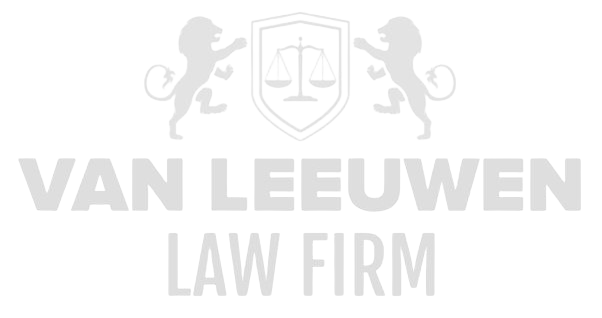In today’s global enforcement environment, the concept of corporate liability is developing in an increasingly complex direction, driven by both international convergence and heightened expectations from regulators. The formation of a new normative framework is characterized by a clear shift from purely reactive enforcement toward a proactive assessment of governance structures, information flows, and the effectiveness of internal control mechanisms. This shift reflects the growing emphasis on culture, transparency, and structural accountability within corporations operating across multiple jurisdictions with differing, yet converging, compliance requirements. Regulators are increasingly examining the deeper organizational dynamics that shape the risk of non-compliance with the GDPR, anti-corruption regimes, and other relevant frameworks, resulting in a comprehensive assessment of internal decision-making and risk management.
At the same time, a global enforcement model is emerging in which cooperation between national authorities has intensified, leading to further alignment of methodologies and a broader application of extraterritorial powers. This evolution significantly transforms the approach to corporate liability: corporations face overlapping obligations, divergent reporting requirements, and an increasing risk of parallel investigations. Within this ever more complex landscape, self-policing, voluntary disclosures, supply-chain integrity, and extensive remediation obligations occupy a central place in the assessment framework used by regulators. The outcome is an environment in which legal, organizational, and ethical dimensions are closely intertwined, and in which expectations regarding corporate justice and proportionality require ongoing recalibration.
Convergence of Corporate Liability Models Worldwide
The global convergence of corporate liability models is driven by an increasing harmonization of legislation and regulatory frameworks, with states focusing on developing comparable structures for attributing responsibility to legal entities. This trend is visible in both common law and civil law jurisdictions, where the distinction between individual and organizational fault is gradually blurred through the introduction of hybrid liability models. As a result, a uniform basis for multinational enforcement is emerging, whereby corporations across jurisdictions are assessed using similar standards relating to governance, internal controls, and integrity of decision-making.
Additionally, the globalization of supply chains and financial systems has created heightened pressure on states to develop joint frameworks that minimize the risk of regulatory arbitrage. Convergence is further reinforced by the increasing use of joint task forces, coordinated investigations, and harmonized sanctioning methodologies. In this context, international guidelines—such as those issued by the OECD—serve as an increasingly influential reference point for national lawmakers, resulting in a more homogeneous interpretation of corporate misconduct and liability.
This harmonization trend means that corporations can no longer rely solely on local interpretations of compliance obligations. Assessment frameworks are systematically compared, information is shared across borders, and enforcement is adopting an increasingly multilateral character. This development is creating a global infrastructure in which the evaluation of corporate liability is shifting from a traditional legal analysis to an integrated assessment of risk management, transparency, and international best practices.
Growing Emphasis on “Culture of Compliance” as an Assessment Criterion
The shift toward assessing a corporation’s internal culture constitutes one of the most significant developments in the field of corporate liability. Regulators no longer examine merely whether formal rules exist, but focus on whether these norms are genuinely embedded in day-to-day practice. This includes evaluating the extent to which employees, management, and board members internalize the values of integrity and compliance. An organization’s culture is increasingly seen as a critical indicator of the likelihood of future non-compliance and has become a key basis for mitigation, sanctioning, or enhanced oversight.
This assessment framework involves an in-depth analysis of behavioral patterns, incentive structures, communication channels, and the effectiveness of reporting and escalation mechanisms. Regulators assess not only formal processes but also informal dynamics, such as the extent to which critical signals are acknowledged or ignored. Culture reviews are supplemented by interviews, document analysis, behavioral metrics, and evaluations of training effectiveness, all assessed in relation to both historical incidents and current areas of risk.
The increased focus on culture also requires corporations to undertake structural transformation to meet the expectations of national and international authorities. A credible culture of compliance requires consistent tone from senior leadership, robust accountability mechanisms, and an environment in which employees can report irregularities without fear of retaliation. As a result, culture has evolved from an abstract concept into a concrete assessment criterion that forms the core of the modern enforcement framework.
Stricter Requirements for Senior Management Oversight
The role of senior management has expanded significantly in recent years due to the introduction of stricter statutory and regulatory obligations. Management is no longer assessed solely on strategic direction but also on its active and demonstrable involvement in compliance processes and risk management. Regulators increasingly analyze whether senior leaders have visibility into relevant risks, whether they are adequately informed, and whether they proactively address potential shortcomings. This assessment extends well beyond formal documentation and includes a substantive review of behavior, decision-making, and governance structures.
Personal exposure for senior management has also increased, driven by legal provisions that impose direct responsibility for failing to ensure effective compliance frameworks. Senior leaders face detailed scrutiny concerning their role in incidents, their involvement in escalations, and whether they exercised adequate oversight of internal controls and risk signals. This development creates a normative framework in which negligence, passivity, or insufficient knowledge of critical compliance topics may lead to personal liability.
As a result, senior management oversight has become an integral component of corporate liability assessment. Executives must demonstrate measurable and documented involvement in monitoring, audits, training, and remediation. The effectiveness of this involvement is evaluated using objective data, including internal reports, governance decisions, and evidence that concrete risks have been effectively mitigated. Oversight has therefore become a strategic element of risk management and a key criterion in enforcement.
Expansion of Extraterritorial Powers (e.g., FCPA/UKBA-Type Regimes)
The expansion of extraterritorial powers under anti-corruption and enforcement regimes such as the FCPA and the UK Bribery Act has created a global framework in which corporations must account for conduct occurring outside their home jurisdiction. Regulators apply broad interpretations of jurisdiction, meaning that transactions, decisions, or even indirectly connected activities may trigger investigation. This development reinforces the need for corporations to adopt globally consistent compliance standards, as enforcement risk spans multiple jurisdictions regardless of where the conduct occurred.
Extraterritorial reach is further strengthened through intensive cooperation between authorities, with information shared globally and investigations coordinated across states. As a result, a single incident may lead to parallel enforcement by multiple jurisdictions, each applying different legal standards and sanctions. Corporations are therefore compelled to implement extensive due diligence processes for international activities, joint ventures, agents, and distributors, ensuring that oversight extends well beyond direct transactions.
The consequences of this expansion are substantial: corporations must account for international exposure, cross-border legal complexity, and the risk of cumulative sanctions. Extraterritoriality has become a structural component of global compliance strategy and requires a comprehensive, structural approach to risk management, contractual controls, and supply-chain monitoring.
Heightened Expectations Regarding Self-Policing and Voluntary Disclosures
Regulators are placing increasing emphasis on the responsibility of corporations to independently identify, investigate, and promptly report potential violations. Self-policing is viewed as a critical element of modern enforcement policy, with regulators assessing the extent to which corporations can detect irregularities early and take appropriate measures to mitigate harm. These expectations extend beyond traditional audit mechanisms and require advanced monitoring technologies, data-driven risk assessments, and effective internal reporting systems.
Voluntary disclosure also plays a central role in the modern enforcement framework. Authorities emphasize that timely, complete, and transparent disclosure of potential violations may result in sanction mitigation, reduced fines, or, in certain cases, avoidance of prosecution. Assessment of a disclosure includes reviewing its completeness, timeliness, and the quality of the internal investigation that preceded it. Corporations that fail to voluntarily disclose face significantly higher enforcement risks, in part because the absence of disclosure is interpreted as an indication of an inadequate compliance culture.
These heightened expectations require corporations to construct a robust framework that focuses not only on detection and reporting but also on effective remediation. Regulators evaluate whether internal investigations are conducted independently, whether corrective actions are properly implemented, and whether the organization effectively learns from incidents. As a result, self-policing is no longer regarded as an optional tool but as a central criterion in determining corporate liability.
Evolution of Sanctioning Models (Monitorships, Disgorgement, Deferred Prosecution)
The evolution of modern sanctioning models reflects a paradigmatic shift from purely punitive measures toward a more holistic combination of punishment, oversight, and structural behavioral reform. Monitorships play an increasingly important role within this framework. They are imposed when authorities determine that an enterprise has failed to ensure effective internal controls, risk management, and compliance with applicable legal standards. A monitor is typically tasked with overseeing the implementation of remediation measures, evaluating governance structures, and ensuring that remedial actions are not merely cosmetic but genuinely sustainable. Regulators view monitorships as a mechanism to accelerate structural reforms and to assess the practical effectiveness of compliance programs, subjecting the organization to heightened transparency requirements during a period of intensive external observation.
Disgorgement forms another key pillar of modern enforcement strategies, compelling enterprises to surrender profits derived directly or indirectly from non-compliance with applicable norms. This measure is not primarily punitive; rather, it is aimed at restoring a situation in which no financial benefit arises from unlawful conduct. Disgorgement is increasingly combined with additional sanctions, including civil penalties or criminal financial remedies, to ensure that any economic advantage is fully neutralized. Regulators are applying disgorgement more frequently in cross-border contexts, exposing companies worldwide to a consolidated approach to the recovery of ill-gotten gains.
Deferred Prosecution Agreements (DPAs) and similar mechanisms constitute the third major component in the evolution of sanctioning models. They offer enterprises the possibility of avoiding prosecution provided that specific obligations are fulfilled, including conducting internal investigations, improving governance, paying fines, and implementing monitorships. These agreements create a framework in which organizations must demonstrably invest in structural reforms, while regulators closely monitor progress. DPAs thus embody a modern enforcement model oriented toward both deterrence and behavioral change, with transparency, proportionality, and sustainable remediation at its core.
Increasing Attention to Supply-Chain-Related Liability
The international focus on supply-chain-related liability is intensifying due to the growing recognition that risks of non-compliance extend far beyond an enterprise’s direct operational activities. Regulators emphasize that legal entities bear responsibility for integrity throughout their entire value chain, including suppliers, subcontractors, distributors, and other business partners. This development is reinforced by legislation that explicitly imposes due-diligence obligations in areas such as human rights, environmental compliance, anti-corruption, and data protection. Supply-chain transparency has therefore become a structural component of the modern compliance landscape.
In this context, enterprises are expected to conduct in-depth risk assessments that map geographic, sectoral, and organizational risk factors. Regulatory oversight focuses on the extent to which enterprises can map their supply chains, monitor risks in real time, and remediate deviations promptly. This requires contractual controls, periodic audits, supplier screening, and the establishment of escalation and reporting mechanisms across the chain. Regulators also assess whether enterprises can embed supply-chain risks into their governance structures and risk frameworks in an integrated manner.
The heightened scrutiny surrounding supply-chain liability leads to a significantly more rigorous evaluation of an enterprise’s role within global economic ecosystems. Non-compliance within the chain is no longer viewed as an external circumstance but as an indication of insufficient governance, inadequate risk management, and ineffective strategic oversight. As a result, supply-chain integrity becomes a decisive criterion for determining the degree of liability within global enforcement regimes, with transparency, traceability, and sustainable remediation serving as central principles.
Transparency Obligations Concerning Internal Investigations and Remediation
Modern enforcement regimes increasingly emphasize transparency in internal investigations and in the manner in which enterprises address deficiencies. Regulators expect internal investigations to be conducted independently, diligently, and with thorough documentation, ensuring that all relevant facts are identified and assessed systematically. Transparency plays a pivotal role: enterprises are expected to provide clear insight into the nature, scope, and root causes of identified non-compliance, without selective disclosure distorting the factual picture. There is heightened scrutiny regarding whether internal investigations are genuinely aimed at uncovering the truth and driving structural improvement.
Transparency obligations also extend to the execution and communication of remediation efforts. Regulators evaluate whether remedial measures are proportionate, sustainable, and effective, and whether enterprises demonstrably invest in strengthening weaknesses in governance, culture, and risk management. This process encompasses both technical remediation—such as enhancing internal control systems—and behavioral or cultural reforms. Transparency regarding remediation is viewed as a sign of accountability and serves as a crucial factor in determining the extent of mitigation applied to sanctions.
This approach creates an environment in which internal investigations are not merely defensive instruments but structural pillars of corporate governance. Transparency becomes a strategic element of enforcement interaction, enabling enterprises—through openness, completeness, and consistency—to demonstrate their ability to manage risks sustainably and prevent future non-compliance.
Impact of Global Settlements on National Prosecution Strategies
The rise of global settlements has significantly influenced national prosecution strategies as authorities worldwide pursue coordinated enforcement and harmonized sanctions. Global settlements are characterized by complex negotiations between multiple states, resulting in agreements on fines, remediation obligations, monitorships, and information-sharing commitments. These agreements offer efficiencies and promote consistency, but they also raise fundamental questions about jurisdiction, prioritization, and the allocation of enforcement authority.
National authorities increasingly face the challenge of aligning their prosecution strategies with international arrangements while ensuring that national interests remain adequately protected. The interaction between global settlements and domestic enforcement requires careful evaluation of proportionality, local enforcement priorities, and the impact of international commitments on national enforcement capacity. This creates a dynamic landscape in which regulators must balance legal, policy, and diplomatic considerations to achieve coherent prosecution strategies.
For enterprises, global settlements mean that enforcement is increasingly approached from an integrated, multilateral perspective. This elevates complexity but also creates opportunities for consistent resolution of matters spanning multiple jurisdictions. Consequently, enterprises are encouraged to implement globally uniform compliance standards, as deviations may lead to fragmented enforcement and disparate sanction levels. Global settlements therefore contribute significantly to the transformation of the international enforcement landscape.
Balancing Deterrence, Proportionality, and Corporate Justice
The modern enforcement framework is defined by a continuous pursuit of balance between deterrence, proportionality, and corporate justice. Deterrence remains a core objective, requiring sanctions that exert a meaningful preventive effect on both the enterprise and the broader market. This necessitates careful calibration of financial penalties, structural reforms, and reputational consequences. At the same time, sanctions must not be so severe as to become disproportionate, threaten the viability of enterprises, or undermine broader societal interests such as employment or economic stability.
Proportionality thus becomes a fundamental principle requiring regulators to align sanctions with factors such as the severity of the misconduct, the degree of culpability, the magnitude of harm, and the level of cooperation during the investigation. A nuanced application of proportionality demands that regulators take into account the efforts undertaken by enterprises to mitigate risks, self-report incidents, and implement remediation. These factors significantly influence the ultimate severity of imposed measures and incentivize enterprises to invest substantially in robust compliance structures.
Corporate justice forms the third pillar of this balancing model. It calls for an equitable treatment of enterprises, taking into account legal principles as well as ethical and societal considerations. Justice requires transparency in regulatory decision-making, consistent application of standards, and a willingness to consider circumstances that affect the degree of blameworthiness. The result is a framework in which enforcement is conceived not solely as a means of punishment but as a vehicle for structural improvement.















